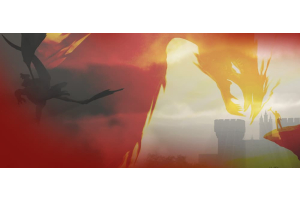We use cookies to offer you a better experience. For more information on how we use cookies you can read our Cookie and Privacy Policy.
The 11 Best Free MMORPG Games

Warning: Some of the video games listed below are not suitable for younger viewers. Please use caution and check each game’s ESRB rating before allowing children to play it, especially those rated M for Mature. M-rated video games may contain content that is inappropriate for children and/or unlabeled content that exposes younger players to explicit messages and themes.
Free-to-play games for fun and profit
It seems counter-intuitive at first until you think about it. The most profitable and successful multiplayer games are ones that you get, and get into, for free. Or we should say, that you can play for free. Once you’re in, there’s stuff that you can buy if you want. And that, as they say, is where they getcha.
Letting players in without charge and pumping up those numbers of engaged human beings interacting with each other makes a whole lot of sense - especially if you give all those players reasonably compelling reasons why they might want to pay a little bit, here and there, for enhancements or features or in-game loot or swag.
Those micro-payments add up to big numbers. And the proof of concept is in the bank accounts of the studios who pull it off correctly. A successful “free” game with a constant, thriving user base can bring in hundreds of millions of dollars per year [1].
The free-to-play gaming phenomenon is not new, but it is experiencing a renaissance. It’s moved from the area in which it really took on steam, the massively multiplayer online role-playing game (MMORPG) into the action genre, with multiplayer online battle arena (MOBA) games like League of Legends, PUBG, Fortnite, and Apex Legends where it has become the dominant force in gaming.
MMORPGs need massive numbers of players logging in to feel like a fully populated other-world of fantasy and adventure. Here is a list of the 11 best free MMORPGs running today that you can get into without spending a dime. But we’re betting that once you’re in you’ll decide to spend a few.
1. War Thunder by Gaijin Entertainment
The game offers free play, which allows gamers to get good at the various crafts, and there is much to be done within the limits of the earnable levels and currency rewards. Players who really get bit by the WWII bug and want to face off against other dedicated wargamers will probably switch to the premium account to access the top-level gear and equipment.
2. RuneScape 3 by Jagex
Truth be told, it was little more than a modified fantasy chat room with some primitive graphics and an account system. It began with a few hundred players. But by 2007, it had proven the Field of Dreams maxim of “If you build it, they will come,” as it boasted millions of players and had netted hundreds of millions of dollars. The beloved classic version of RuneScape continued to be supported for 17 years, closing up in 2018.
RuneScape 3 is an updated version of the same kind of reliable, comforting RPG experience. In a world of hyper-franchises, triple-A (AAA) titles, and a kind of arms race of gaming, RuneScape 3 is like playing a never-ending game of D&D with old friends. Questing, leveling up, gaining gear, defeating monsters, and finding items are part of a formula that works.
3. League of Legends by Riot Games
You, as the human player, are a kind of unseen, demigod-like figure called a “Summoner” who chooses a “Champion” type (as of 2019, there are 144 different types) to gate into and onto the map. Each Champion type can command different types of forces, and the players are pitted against other Summoners, their Champions, and forces.
League of Legends is free to play in the "freemium" sense of "free." While it allows gamers the core game for free, optional charges apply for premium content missions, in-game currency, and customization options by way of microtransactions.
4. World of Warcraft by Blizzard Entertainment
And it still IS a subscription service, with a catch: a system of in-game earnable gold-missions, past a certain level will allow you to “buy” ongoing time playing the game, to avoid subscription costs. There’s also still the initial cost of the game, but the subscription becomes not so much “optional” as it is “avoidable” by dedicated play. And there’s a lot there to play.
WoW is the granddaddy of the online fantasy world for a very good reason. Blizzard not only innovated many of the conventions of MMORPG gameplay, storytelling, and questing, but it can be argued that it has done the most to perfect them. WoW is to MMORPGs what Pixar is to animated feature films; it’s the accepted standard by which all the newcomers are judged.
The world of the Horde of Orcs and the Alliance of Men has been fraught with all manner of epic grandeur and twists for decades and continues to provide compelling reasons to stick around.
5. EVE Online by CCP Games
It’s not hyperbole to say that the gameplay of EVE Online is a work of art. It is literally true; the complex economy of mining, trading, crafting, piracy, and combat that have arisen from it, setting its players loose to choose their own objectives in the “playground” of fertile star systems, was actually exhibited at the Museum of Modern Art as an installation [2].
A video featuring the in-game historical events and the creations of the player base was a part of the display. The collective storytelling of hundreds of thousands of players, each pursuing their own goals, and in the process, creating an ongoing world, was enough to become high art.
The scope of EVE Online is very ambitious. It sets about to create a kind of persistent, alternate sci-fi universe and allows the players to do what they will within it, trusting that given the tools, including a dynamic supply and demand-based economy system along with the standard crafting and combat of gaming, that interesting things will arise. And they do. EVE Online moved to a free-to-play model in 2016.
6. Star Wars: The Old Republic by BioWare
After choosing which side you’ll be on (Sith Empire or Galactic Republic) and creating your character, your adventure begins in classic Star Wars style: with the familiar yellow text, scrolling into infinity, and the stirring score that immediately sets you in the mindset of being in a galaxy far, far away. The eight classes available include Bounty Hunter, Sith Warrior, Imperial Agent, and Sith Inquisitor for the Sith Empire side, and Trooper, Smuggler, Jedi Knight, and Jedi Consular for the Galactic Republic. Playing through each different class will give a player a distinct and different storyline from each other, but all are integrated into the story of the game's overarching plotline.
This is a game that began its life as a pay-to-play model, but has moved to free-to-play to attract and keep a constant player base.
7. Guild Wars 2 by ArenaNet
What Guild Wars 2 does so very well that eludes other titles is to create a sense of community by way of shared consequences. Events that occur in the game world are affected by the user base’s successes or failures. These have permanent, ongoing repercussions in the game’s environment and storyline.
Guild Wars 2 features incredible visual effects and design and a sense of being thrust into a world in crisis, wherein your quests are a part of the larger struggle against a global threat. Leveling up means being a part of, and witness to, cinematic and impressive set-pieces that are all a part of what makes getting into Guild Wars 2 something of a pretty good value proposition, considering the cost of entry. And that is, of course, free.
8. TERA by Krafton
The emphasis in TERA is action. It was developed with the idea that one should be able to use a console-style controller without needing a keyboard and mouse. What awaits you in the game are lush, beautiful environments and a sprawling, open-world that lets you engage in exciting combat with Big-Ass Monsters (BAMs) - which are the oversized specialty enemies that you encounter within TERA.
9. The Lord of the Rings Online: Shadows of Angmar by Turbine
It is also fitting that a property with such a lasting legacy is one of the longest-lasting MMORPGs on the internet. If you can believe it, The Lord of the Rings Online was introduced in 2007 (!!) and is still going strong in 2019, after many iterations and updates. It began life as a traditional pay-to-play title, but was one of the first to transition to a free-to-play model, back in 2010, when such an idea was not only controversial but downright revolutionary.
Offering truly deep quests and adventures, The Lord of the Rings Online: Shadows of Angmar is a highly customizable experience that also captures the flavor of Tolkien’s world. At level 5, a character has the option to add “music” skills and unlock different instruments. Music and songs were always a large part of The Lord of the Rings narrative.
A sub-system of the game lets players map keyboard macros and use a notation system to play tunes on instruments such as bagpipes, horns, harps, and lutes, in real time, that can be heard by players in the vicinity of their character. (You can also create scripts with pre-written music.)
This has led to in-game music festivals, among the questing for mystic tools and mithril blades. You may recall that mithril is the once-mined-by-Dwarves fictitious silvery, lightweight, yet incredibly strong metal of Tolkien’s lore - used for everything from weapons to clothing to decorative jewelry.
While The Lord of the Rings Online is (and has been) free to play, many subscription models within the game allow for more content and items/currency to be unlocked. In so doing, one may more properly settle into the world of Middle Earth.
10. Crossout by Targem Games
Think of it like a super-deadly version of the Cub Scout’s “Pinewood Derby” - how you craft and refine your vehicle is really up to your own imagination, set of ideals, and what items you have available to you.
Once you get past level 10, you’ll be able to join different “factions” that specialize in styles of vehicular mayhem. Players who opt for high risk, high reward, agile, and explosive buggies might find themselves joining the “Lunatic” faction. Players with a bent toward hot-rod design might gravitate toward the “Firestarter” faction, whose rides are big on style and don’t just have flames as part of their paint-job, but also mounted flame-throwers (and shotguns and explosives) to take out the competition.
11. Blade & Soul by NCSOFT
But the standards are standards for a reason; there’s a certain amount of “If it ain’t broke, don’t fix it” mentality to the way the game’s build progression is structured.
Blade & Soul offers a kind of aesthetic and design that is decidedly anime, as opposed to the hack-and-slash world of trolls, orcs, knights, and wizards that tend to populate many RPGs. Expect scantily clad, highly colorful, yet deadly anime fighters with different customizable outfits and accessories.
What sets Blade & Soul apart from its peers is the PvP combat that brings fighting game ideas and play mechanics into the MMORPG world. Different character classes employ various gameplay strategies and styles that match their design: Kung Fu Masters use hand and foot attacks that look like choreography from a Shaw Brothers film; Gunslingers and Archers deal death from a distance with projectile attacks; Destroyers generate brute force blows at the sacrifice of elegance and speed.
As it stands, you’ll be somewhat able to use actual skill and strategy to even the odds in a mismatch between levels; a very skilled character at low level does stand a chance against a medium-skilled one who has “grinded” and leveled up to great stats. Or you can easily match wits against one who has bought their way into good gear with microtransactions.
Why play?
About the Author: Jolene Dobbin is a contributing writer for HP® Tech Takes. Jolene is an East Coast-based writer with experience creating strategic messaging, marketing, and sales content for companies in the high-tech industry.
Article reposted with permission from HP Tech Takes






